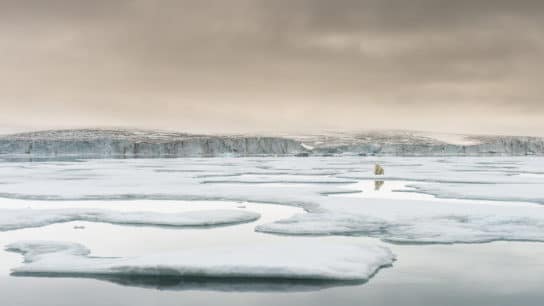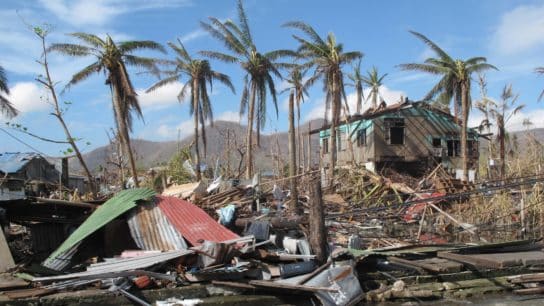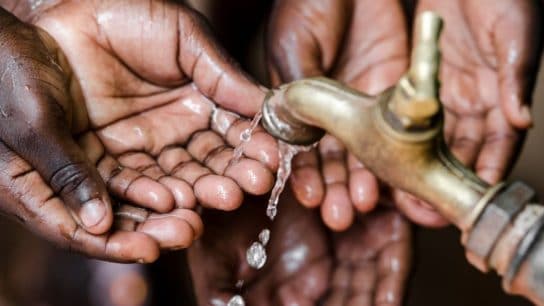Climate change is making wildfires longer, more frequent and more intense. In this sobering photostory, award-winning photographer Marcos Ramos documents how recent wildfires in Brazil have shaped landscaped, destroyed entire ecosystems and affected the livelihoods of local communities.
—
The year 2024 will be remembered as one of the most challenging in the fight against wildfires around the world. Iconic regions such as the Amazon, the Pantanal, Canada, Australia, California, and the Mediterranean have witnessed the destruction of vast forest areas and ecosystems as well as many inhabited areas.
The causes of these fires are varied, ranging from human actions, such as illegal deforestation and unsustainable agricultural practices, to natural events exacerbated by climate change. The rise in global temperatures, driven by the uncontrolled emission of greenhouse gasses, has created the perfect environment for fires to spread more strongly and frequently. As warned by the World Meteorological Organization’s (WMO) first Special Report on Wildfires, a lethal combination of record temperatures, prolonged droughts, and strong winds has fueled the uncontrolled spread of fire in various regions.
The devastation of forests is directly linked to the loss of biodiversity. The Amazon, for example, lost more than 4,661 square kilometers of its cover in 2024 alone. This biome is home to thousands of species that depend on this habitat for survival. The destruction of these areas not only threatens species extinction but also disrupts vital food chains and ecosystem services, such as air purification and water cycle regulation. According to the World Wildlife Fund (WWF), in many cases, the impact of these burns is irreversible, with forest regeneration occurring at a much slower rate than destruction.
More on the topic: Top 13 Largest Wildfires in History
In addition to directly affecting ecosystems, wildfires have a significant impact on global temperatures. Burns release large amounts of carbon dioxide (CO2) into the atmosphere, one of the main drivers of global warming. NASA estimated that in 2024, wildfires released more than 7.5 billion tons of CO2. This increase in CO2 concentration intensifies the greenhouse effect, contributing to the warming of the planet and altering climate patterns worldwide.

The consequences of the burns also directly affect human communities, especially those that depend on forests for subsistence. The displacement of populations, loss of properties, and increase in health problems related to smoke inhalation are immediate impacts of these tragedies. Studies by the World Health Organization (WHO) indicate a significant increase in respiratory diseases in affected regions, exacerbating public health crises in various parts of the world.

The Pantanal Is Burning
In early August, the Pantanal, a natural region encompassing the world’s largest tropical wetland area, and the world’s largest flooded grasslands saw more than 100,000 hectares consumed by fires, worsening the environmental crisis that has plagued the region since the beginning of 2024. With this devastating advance, the burns reached 8.7% of the biome as of August 8, surpassing 1.3 million hectares destroyed just this year.
Experts and environmentalists are alarmed by the magnitude of the fires, which are devastating one of the world’s most biodiverse ecosystems. According to the National Institute for Space Research (INPE), the Pantanal, which is located mostly within the Brazilian state of Mato Grosso do Sul but also extends into Bolivia and Paraguay, is facing one of the worst wildfire seasons in recent history, driven by adverse climatic conditions such as prolonged droughts and high temperatures.

“The scenario is devastating,” said Fernando Tortato, a researcher at Brazil’s Institute for Ecological Research (IPÊ). “The loss of native vegetation and the death of animals threaten the ecological balance of the Pantanal, with consequences that may be irreversible.”
Authorities, including the Brazilian Institute of Environment and Renewable Natural Resources (IBAMA), are mobilized to contain the fire outbreaks, but the vast extent of the affected areas and the difficulty of access complicate firefighting efforts.

The growing devastation increases pressure on the federal government to intensify environmental protection measures and fight the burns, which affect not only the environment but also local communities and the region’s economy.
President Luiz Inácio Lula da Silva acted quickly. On July 31, he sanctioned a bill that establishes the National Integrated Fire Management Policy, after flying over the Corumbá region (MS) in the Pantanal.
“This law we signed here will be a milestone in combating fires in this country. First, because we are recognizing the extraordinary work that you [firefighters] do. Second, it is a project that was made by you, for the most part. Third, because Brazil will host COP30 next year, in the city of Belém,” said Lula.

The federal government mobilized 890 professionals in the biome, including military personnel and teams from IBAMA, the Chico Mendes Institute for Biodiversity Conservation (ICMBio), the National Public Security Force, and the Federal Police, with the support of 15 aircraft and 33 boats.
“At the root of the challenge is a terrible combination of climate change, deforestation, and fires. This perverse chemistry is what leads us to witness the scenes we saw recently. The fire is not state, federal, or municipal. It is something to be fought and managed appropriately,” declared Marina Silva, Minister of the Environment.

The Pantanal is facing the most severe drought in 70 years, intensified by climate change. All fires affecting the biome in the past two months can be traced back to human activities such as land-clearing burns, the use of fire for agricultural purposes, or even accidents and negligence.
Wildfires in the Atlantic Forest of Rio de Janeiro
The state of Rio de Janeiro is also facing an alarming increase in wildfires and burns in vegetation this year, especially in the Atlantic Forest, one of the world’s most biodiverse biomes. High temperatures, coupled with prolonged periods of drought, have created ideal conditions for the advance of flames, causing irreparable damage to local fauna and flora.
According to data from INPE, the number of fire outbreaks in Rio de Janeiro increased by 35% compared to the same period last year. Most of these occurrences were concentrated in the mountainous regions and around environmental preservation areas, where dry vegetation acts as fuel for the rapid spread of fire.

The Atlantic Forest, which has already suffered a drastic reduction in its original cover, is particularly vulnerable. A study by SOS Mata Atlântica shows that only 12.4% of the original forest remains intact, and fires accelerate the loss of this natural heritage. Furthermore, the destruction of vegetation directly affects the quality of water resources and soil stability, increasing the risk of landslides and floods, especially during the rainy season.
Another aggravating factor is human activity, whether through inadequate agricultural practices or intentional fires. Many farmers still resort to burns to renew pastures and clear areas for cultivation, a practice that, although prohibited, remains common in various regions of the state. Ibama and other environmental authorities have intensified monitoring and awareness campaigns, but the problem persists due to a lack of resources and difficulty in accessing remote areas.
The situation is particularly critical in conservation units such as the Tijuca National Park and the Três Picos State Park, where large-scale fires have compromised the integrity of local ecosystems. ICMBio and the State Environment Secretariat have been working to contain the fires and promote the recovery of affected areas, but the challenges are immense.

In a scenario of climate change and growing human pressure, preserving the Atlantic Forest requires coordinated actions and investments in prevention and environmental education. Additionally, the restoration of degraded areas and the strengthening of public policies are essential to ensure that this natural jewel of Rio de Janeiro continues to play its essential role in climate regulation and biodiversity conservation.
Finally, the wildfire crisis in 2024 highlights the urgent need for coordinated global action to mitigate climate change and protect forest ecosystems. The implementation of strict environmental preservation policies, the reinforcement of firefighting strategies, and investment in monitoring technologies are crucial steps to reverse this alarming trend. The international community must recognize that protecting forests is a shared responsibility, vital for maintaining life on the planet and climate stability.
Featured image: Marcos Ramos.
Check out other Earth.Org’s photostories here.
This story is funded by readers like you
Our non-profit newsroom provides climate coverage free of charge and advertising. Your one-off or monthly donations play a crucial role in supporting our operations, expanding our reach, and maintaining our editorial independence.
About EO | Mission Statement | Impact & Reach | Write for us














